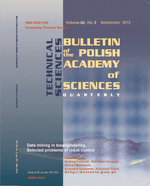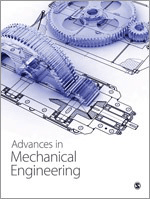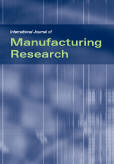
Dyna
Scope & Guideline
Illuminating diverse perspectives in engineering disciplines.
Introduction
Aims and Scopes
- Interdisciplinary Engineering Research:
Dyna publishes research that spans multiple engineering disciplines, fostering collaboration and innovation in fields such as mechanical, civil, electrical, and industrial engineering. - Sustainable Technologies and Practices:
A core focus of the journal is on sustainable technologies, including renewable energy systems, waste management, and eco-friendly materials, contributing to the global discourse on sustainability. - Advanced Manufacturing Techniques:
The journal emphasizes research on advanced manufacturing processes such as additive manufacturing, robotics, and automation, reflecting the growing importance of these technologies in modern industries. - Data-Driven Approaches in Engineering:
Dyna explores the application of data science and artificial intelligence in engineering, highlighting trends in predictive maintenance, optimization, and decision-making using machine learning and statistical methods. - Socio-Technical Systems and Human Factors:
The journal addresses the interactions between technology and society, investigating the human aspects of engineering practices, including ergonomics, safety, and user experience.
Trending and Emerging
- Smart and Sustainable Cities:
Research on smart city technologies, including IoT applications, urban mobility, and sustainability practices, has gained prominence, reflecting the growing interest in urban resilience and efficiency. - Artificial Intelligence and Machine Learning:
There is an increasing focus on the application of AI and machine learning in engineering, particularly in predictive maintenance, process optimization, and data analysis, showcasing the transformative potential of these technologies. - Circular Economy and Waste Management:
Emerging studies on the circular economy, recycling processes, and sustainable waste management practices are becoming more common, emphasizing the need for resource efficiency and environmental protection. - Innovative Materials and Composite Structures:
Research into advanced materials, including bio-based and composite materials, is trending, reflecting innovations in material science that support sustainability and performance in engineering applications. - Health and Safety Engineering:
The journal is increasingly publishing work that addresses health and safety in engineering contexts, particularly in light of recent global health challenges, highlighting the importance of ergonomic and safe design practices.
Declining or Waning
- Traditional Energy Sources:
Research related to conventional energy sources, such as fossil fuels and nuclear energy, has decreased, as the journal increasingly prioritizes renewable energy and sustainable practices. - Basic Manufacturing Techniques:
Papers focused on traditional manufacturing methods, such as conventional machining, have become less common, overshadowed by the rise of advanced and automated manufacturing technologies. - Stand-Alone Engineering Solutions:
There is a noticeable decline in research that presents isolated engineering solutions without considering interdisciplinary or integrated approaches, as the journal embraces more holistic methodologies. - Static Risk Analysis:
The emphasis on static risk analysis methods has waned in favor of dynamic and predictive risk assessment techniques that leverage real-time data and advanced analytics. - Localized Studies:
There is a reduced frequency of localized case studies that do not have broader applications or implications, as the journal seeks to publish more universally applicable research.
Similar Journals

Bulletin of the Polish Academy of Sciences-Technical Sciences
Exploring Innovations in Engineering and TechnologyBulletin of the Polish Academy of Sciences-Technical Sciences is a distinguished peer-reviewed journal published by the Polish Academy of Sciences, focusing on a broad spectrum of disciplines within technical sciences. With an E-ISSN of 2300-1917 and an established presence since 1983, this journal transitioned to an Open Access model in 2009, ensuring wide dissemination of innovative research findings. Recognized for its contributions, the journal boasts notable rankings in various categories, including Q4 in Artificial Intelligence and Q3 in fields such as Computer Networks and Communications and Atomic and Molecular Physics, as indicated by its Scopus rankings. With its strategic location in Warsaw, Poland, and a commitment to advancing knowledge and technology, the Bulletin serves as a vital platform for researchers, professionals, and students to share and engage with cutting-edge developments in engineering and related fields. Emphasizing high-quality research, this journal offers an essential resource for anyone looking to enhance their understanding of current trends and breakthroughs in technical sciences.

Advances in Mechanical Engineering
Elevating Research Standards in Mechanical EngineeringAdvances in Mechanical Engineering is a premier open-access journal published by SAGE Publications Ltd, dedicated to the advancement of theoretical and applied research in the field of mechanical engineering. With an ISSN of 1687-8132 and an E-ISSN of 1687-8140, this journal has been a vital resource for scholars and practitioners since its inception in 2009. Housed in the United States, it operates under a commitment to ensure free and immediate access to its high-quality content, enhancing collaboration and innovation across the global engineering community. With a noteworthy Q2 ranking in the mechanical engineering category and a solid Scopus rank placing it in the 59th percentile, the journal serves as an influential platform for cutting-edge research, theoretical advancements, and comprehensive reviews. As the field evolves, Advances in Mechanical Engineering continues to cater to the rigorous needs of researchers, professionals, and students, striving to transform knowledge into tangible engineering solutions. This journal's commitment to excellence makes it a significant contributor to the mechanical engineering field, encouraging dynamic discussions and implications for the future.

AI EDAM-ARTIFICIAL INTELLIGENCE FOR ENGINEERING DESIGN ANALYSIS AND MANUFACTURING
Exploring New Frontiers in Engineering with Artificial IntelligenceWelcome to AI EDAM - ARTIFICIAL INTELLIGENCE FOR ENGINEERING DESIGN ANALYSIS AND MANUFACTURING, a leading journal published by Cambridge University Press. This esteemed journal focuses on innovative research at the intersection of artificial intelligence and engineering design, analysis, and manufacturing, making it an essential resource for academics, industry professionals, and students alike. With an ISSN of 0890-0604 and an E-ISSN of 1469-1760, AI EDAM has established itself within the academic community, reflected in its impressive Scopus rankings: a Q3 journal in Artificial Intelligence and a Q2 journal in Industrial and Manufacturing Engineering. Covering years from 1987 to 2024, this journal emphasizes the rapidly evolving nature of engineering practices influenced by AI technologies. With robust contributions to the fields of engineering and computer science, AI EDAM serves as a crucial platform for disseminating scholarly work that fosters advancements in design and manufacturing methodologies.

IEEE Open Journal of Industry Applications
Fostering excellence in electrical and manufacturing research.IEEE Open Journal of Industry Applications is a premier open-access publication established in 2020 by the esteemed IEEE-INST ELECTRICAL ELECTRONICS ENGINEERS INC, dedicated to advancing the fields of Control and Systems Engineering, Electrical and Electronic Engineering, and Industrial and Manufacturing Engineering. With a strong commitment to disseminating high-quality research, the journal has rapidly garnered recognition, achieving a Q1 quartile ranking in multiple engineering categories, notably securing a rank of 21st out of 321 in Control and Systems Engineering and 26th out of 384 in Industrial and Manufacturing Engineering as of 2023. This journal not only facilitates immediate access to cutting-edge findings but also fosters an inclusive academic environment where researchers, professionals, and students can engage with and contribute to the evolving landscape of industry applications. By embracing open access, it ensures that pivotal research is freely available, thereby maximizing its impact on the scientific community. For potential contributors and readers, the journal's robust Scopus rankings—placing it in the top 7% of its fields—highlight its significance as a leading platform for innovative discussions and explorations in engineering.

Journal of Engineering Research
Advancing Engineering Innovation for a Global AudienceJournal of Engineering Research, published by ACADEMIC PUBLICATION COUNCIL, is a pivotal open-access platform dedicated to the dissemination of innovative research in the field of engineering. Established in 2013, this journal has continuously provided researchers, professionals, and students with the opportunity to share their groundbreaking findings without the barriers of subscription fees since transitioning to open access in 2014. With an ISSN of 2307-1877 and an E-ISSN of 2307-1885, the journal is indexed in prominent databases, securing its relevance with a ranking in the Q3 quartile for general engineering as of 2023. Located in Kuwait, the Journal of Engineering Research aims to foster interdisciplinary collaboration and promote advancements across various engineering disciplines. The journal’s commitment to quality research is reflected in its ongoing efforts to elevate its Scopus ranking and impact factor, aiming to enhance visibility and accessibility in a globally competitive academic landscape. Researchers looking to publish cutting-edge engineering studies will find a welcoming community eager to advance knowledge and foster innovation.

International Journal of Manufacturing Research
Connecting Scholars and Professionals in Manufacturing InnovationThe International Journal of Manufacturing Research, published by InderScience Enterprises Ltd, serves as a pivotal platform for disseminating innovative research in the field of manufacturing and industrial engineering. With an ISSN of 1750-0591 and E-ISSN of 1750-0605, this journal commits to fostering advancements in areas including manufacturing technologies, control systems, and simulation methodologies. It has established itself within the academic community despite its Q4 category rankings in Computer Science Applications and Control and Systems Engineering for 2023, and it holds a notable position in Industrial and Manufacturing Engineering with a Q3 ranking. The journal reflects the dynamic nature of the manufacturing sector, providing a crucial forum for researchers, professionals, and students to contribute their findings and insights. Although it does not currently offer open access options, its comprehensive scope from 2006 to 2020 and 2022 to 2024 emphasizes its commitment to addressing contemporary challenges in manufacturing and technology. Engaging with this journal can enhance understanding and drive innovation among industry experts and scholars alike.

Manufacturing Technology
Transforming Research into Manufacturing SolutionsManufacturing Technology is a respected journal dedicated to advancing the field of industrial and manufacturing engineering. Published by the Jan Evangelista Purkyne University in the Czech Republic, this journal serves as a vital resource for researchers, professionals, and students interested in the latest developments and technologies in manufacturing processes. With an ISSN of 1213-2489 and E-ISSN 2787-9402, it has carved its niche as a Q3-ranked journal in the 2023 category of Industrial and Manufacturing Engineering on Scopus, showcasing its commitment to high-quality research, evidenced by its standing among the top publications in its field. Although not an open-access journal, it fosters significant academic exchange through its collection of research articles and reviews that span a diverse range of topics. The journal's reach is expanded, having existed for over a decade, with converged years from 2011 to 2024. As manufacturing technologies continue to evolve, Manufacturing Technology remains a key platform for disseminating innovative research, ensuring its relevance and impact within the academic community.

International Journal of Precision Engineering and Manufacturing-Green Technology
Shaping the landscape of precision manufacturing for a sustainable future.International Journal of Precision Engineering and Manufacturing-Green Technology, published by the Korean Society of Precision Engineering, serves as an influential platform dedicated to advancing the fields of engineering and manufacturing with a strong emphasis on sustainability and green technology. Operating in the realm of precision engineering, this journal has firmly established itself within the academic community, boasting impressive Scopus rankings across multiple categories, including Q1 rankings in Industrial and Manufacturing Engineering and Mechanical Engineering, and Q2 in Renewable Energy and Sustainability. With its comprehensive coverage of innovative practices and cutting-edge research from 2014 to 2024, the journal addresses critical challenges faced by industries today while fostering interdisciplinary collaboration among researchers, professionals, and students. Although it does not offer open access, its insights are invaluable for those committed to pioneering sustainable solutions in engineering and manufacturing.

Tehnicki Vjesnik-Technical Gazette
Catalyzing Collaboration in Technical AdvancementsTehnicki Vjesnik-Technical Gazette is a distinguished open-access journal published by the University of Osijek, Technical Faculty, specializing in the broad field of engineering. With its ISSN 1330-3651 and E-ISSN 1848-6339, the journal has been a platform for disseminating innovative research and technical advancements since its inception in 1994. As part of the Scopus rankings, it holds a respectable position in the Q3 category of Engineering (miscellaneous), specifically ranking #165 out of 307 in the General Engineering field, which places it in the 46th percentile. This journal invites contributions from diverse engineering disciplines and aims to foster collaboration and knowledge sharing amongst researchers, professionals, and students. With its commitment to open access since 2006, Tehnicki Vjesnik ensures that research findings are readily available to a global audience, thereby enhancing visibility and impact. Located in Slavonski Brod, Croatia, this journal serves as a pivotal resource for anyone seeking to stay at the forefront of engineering innovations.

Engineering Journal-Thailand
Pioneering new frontiers in engineering scholarship.Engineering Journal-Thailand, published by Chulalongkorn University, Faculty of Engineering, is a prominent academic journal dedicated to advancing knowledge and research in the diverse field of engineering. With an ISSN of 0125-8281 and an unwavering commitment to quality, the journal has established a substantial presence in the academic community since its inception in 2009. As of 2023, it is ranked in the Q3 category for Engineering (miscellaneous) and has achieved a Scopus rank of 137 out of 307, placing it in the 55th percentile of general engineering journals. Although it operates without open access, its impact within the engineering domain is significant, providing a vital platform for researchers, professionals, and students to disseminate their findings and engage with contemporary engineering challenges. The journal serves as a vital resource for those seeking to stay at the forefront of engineering innovation and contributes to the global discourse by bridging local insights with international perspectives.